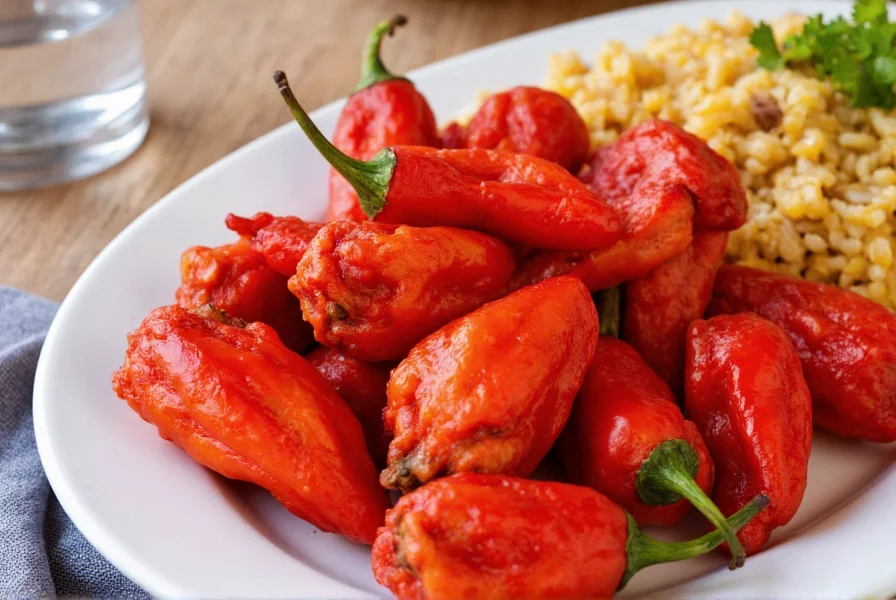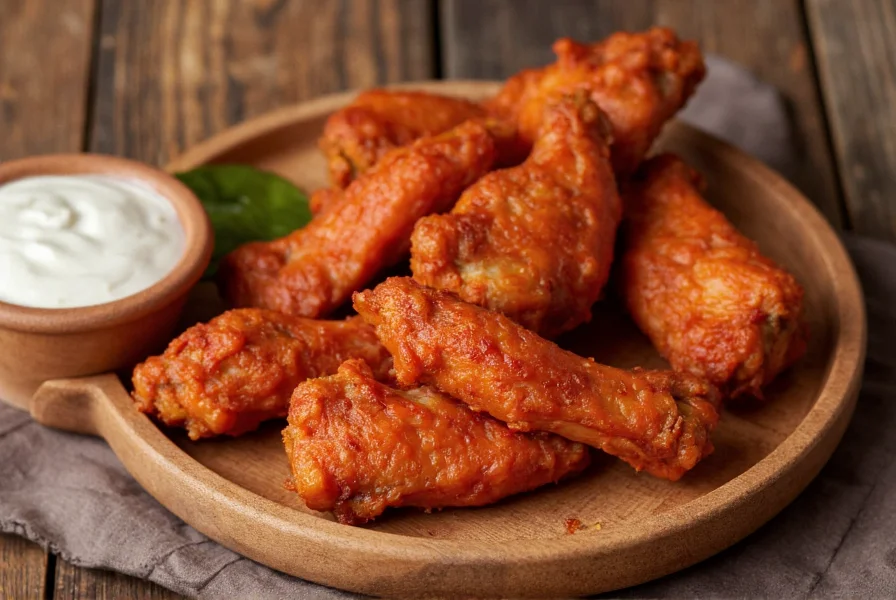Ghost pepper wings represent the frontier of extreme spicy food challenges, pushing the boundaries of heat tolerance for adventurous eaters. Originating from the Bhut Jolokia chili native to Northeast India, these wings have gained popularity in restaurants specializing in spicy food challenges across North America. Understanding what makes ghost pepper wings unique requires examining both the pepper itself and the culinary experience they deliver.
The Science Behind Ghost Pepper Heat
The ghost pepper's extraordinary heat comes from its exceptionally high concentration of capsaicinoids, the chemical compounds responsible for chili pepper spiciness. When properly prepared, ghost pepper wing sauce delivers a delayed but intense burn that starts mildly before escalating to its peak within 30-60 seconds. This delayed reaction often catches inexperienced eaters off guard, contributing to the challenge aspect of consuming these wings.
Ghost Pepper vs. Other Spicy Wings
Understanding where ghost pepper wings stand in the spicy food hierarchy requires comparing their heat levels to more common spicy wing varieties. The following table shows how ghost peppers measure against other popular spicy wing ingredients:
| Pepper Type | Scoville Heat Units | Heat Level Comparison |
|---|---|---|
| Ghost Pepper | 855,000–1,041,000 SHU | 200+ times hotter than jalapeño |
| Habanero | 100,000–350,000 SHU | Ghost pepper is 2-8x hotter |
| Cayenne | 30,000–50,000 SHU | Ghost pepper is 20-30x hotter |
| Sriracha Sauce | 1,000–2,200 SHU | Ghost pepper is 400-1,000x hotter |
Safety Considerations for Ghost Pepper Wings
Consuming ghost pepper wings requires awareness of potential physical reactions. The capsaicin in ghost peppers binds to pain receptors, potentially causing:
- Immediate burning sensation in mouth and throat
- Profuse sweating and facial flushing
- Nasal discharge and watery eyes
- Temporary digestive discomfort
- Rare cases of temporary breathing difficulties
Individuals with gastrointestinal conditions, heart issues, or sensitivity to spicy foods should avoid ghost pepper wings. Always have dairy products like milk or yogurt available to help neutralize the capsaicin, as water merely spreads the oil-based compound.

Finding Authentic Ghost Pepper Wings
While many restaurants advertise "ghost pepper" wings, true ghost pepper wings use sauce made from actual Bhut Jolokia peppers rather than commercial extracts or blends. Authentic establishments typically:
- Provide clear warnings about the extreme heat level
- Require customers to sign waivers for eating challenges
- Offer specific preparation methods to ensure consistent heat
- Maintain proper handling procedures for staff safety
When searching for ghost pepper wings near you, look for specialty hot wing restaurants with established reputations in the spicy food community rather than mainstream chains that may use milder substitutes.
Creating Ghost Pepper Wings at Home
Preparing authentic ghost pepper wings at home requires careful handling and proper safety precautions. Never handle ghost peppers without gloves, and avoid touching your face during preparation. The wings themselves should be fried or baked to proper internal temperature before applying the sauce.
For those attempting ghost pepper wings recipe at home, start with small amounts of pepper and gradually increase. Remember that the heat intensifies over time, so what seems manageable initially may become overwhelming minutes later. Always have cooling agents like full-fat dairy products readily available during consumption.

The Cultural Phenomenon of Extreme Spicy Challenges
Ghost pepper wings have become central to the spicy food challenge culture that has gained popularity across social media platforms. Many restaurants offer "free meal if you finish" promotions for those who can consume a specified number of wings within a time limit. These challenges often require participants to sign waivers acknowledging the potential physical effects.
While the ghost pepper wing challenge rules vary by establishment, most require participants to finish the wings within 15-30 minutes without consuming dairy or other cooling agents during the challenge. Completion certificates have become status symbols within certain foodie communities, though medical professionals generally advise against such extreme consumption.
Responsible Enjoyment of Extreme Spicy Foods
The appeal of ghost pepper wings lies in the adrenaline rush and sense of accomplishment that comes from pushing personal limits. However, responsible enjoyment means understanding your own tolerance and recognizing when to stop. The temporary discomfort some experience after eating ghost pepper wings serves as a natural deterrent against overconsumption.
For those interested in exploring extreme spicy foods, consider building tolerance gradually with milder peppers before attempting ghost pepper wings. This approach allows your body to adapt while minimizing potentially unpleasant reactions. Remember that individual heat tolerance varies significantly based on genetics, previous exposure, and even current physical condition.
Frequently Asked Questions
How hot are ghost pepper wings compared to regular hot wings?
Ghost pepper wings measure between 855,000 and 1,041,000 Scoville Heat Units (SHU), making them approximately 200 times hotter than standard hot wing sauce which typically ranges from 2,000 to 8,000 SHU. The heat from ghost peppers builds more slowly but lasts significantly longer than traditional cayenne-based hot sauces.
What should I do if ghost pepper wings are too hot?
If ghost pepper wings become uncomfortably hot, consume full-fat dairy products like milk, yogurt, or ice cream which contain casein that helps break down capsaicin. Avoid water as it spreads the oil-based compound. Bread or starchy foods can also help absorb some of the heat. In severe cases, seek medical attention if experiencing difficulty breathing or persistent pain.
Can ghost pepper wings cause permanent damage?
While ghost pepper wings cause intense temporary discomfort, they don't typically cause permanent damage when consumed in reasonable quantities. However, excessive consumption could potentially irritate the digestive tract. Individuals with pre-existing gastrointestinal conditions should avoid ghost pepper wings entirely. The burning sensation usually subsides within 30-60 minutes as the capsaicin metabolizes.
How do restaurants safely handle ghost peppers for wings?
Professional kitchens handling ghost peppers use strict safety protocols including nitrile gloves, eye protection, and proper ventilation. Staff are trained to avoid touching their faces and to wash hands thoroughly after handling. Many establishments use pre-made sauces rather than fresh peppers to maintain consistent heat levels while minimizing direct exposure to the raw peppers.
What's the difference between ghost pepper and Carolina Reaper wings?
Carolina Reaper wings are significantly hotter than ghost pepper wings, with Reapers measuring 1,400,000-2,200,000 SHU compared to ghost peppers' 855,000-1,041,000 SHU. Reapers deliver a more immediate, intense burn with fruity undertones, while ghost peppers have a slower-building heat with smoky characteristics. Most people find Carolina Reaper wings substantially more challenging to consume than ghost pepper varieties.











 浙公网安备
33010002000092号
浙公网安备
33010002000092号 浙B2-20120091-4
浙B2-20120091-4